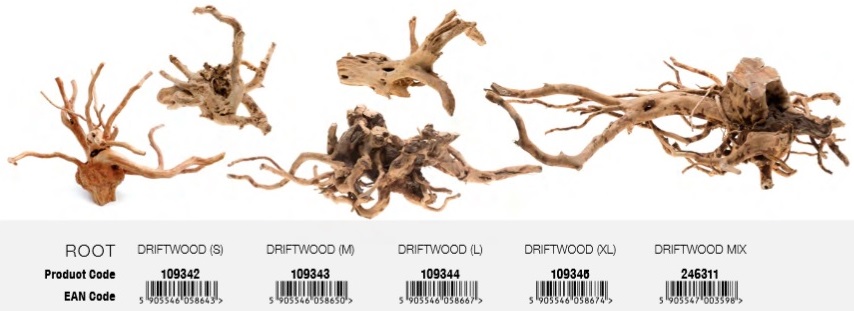Twisted pieces of wood imported from different parts of the world. A typical piece of driftwood consists of an irregularly shaped, knobby trunk with a large number of twisted and forked branches. Dry driftwood is light-coloured, yellowish to beige. However, when immersed in water, it will quickly change its colour to rich brown. Driftwood is available in various sizes.

Before driftwood is placed into the tank, it should be soaked in water for several weeks, since otherwise it will float on the surface. Alternatively, you can make driftwood stay at the bottom by burdening its base with stones.
For a period of time after driftwood has been placed into the tank, an ugly jellylike coating may appear on its surface. This is a normal phenomenon that will eventually pass on its own. However, the coating can also be manually removed e.g. by suction with a hose during water changes or by scraping it off with a soft toothbrush. In addition, the coating is readily eaten by the Japanese shrimp (Caridina multidentata) and by small catfish of the genus Otocinclus, so you should consider using them to populate your aquarium.
Common driftwood can turn the colour of the water to pale brown, although it is less troublesome in this respect than e.g. mangrove root driftwood. In order to eliminate discolouration, you should change the water often and employ an activated-carbon cartridge in the aquarium filter. Driftwood is perfect choice for a planted tank because it can be finishing touch to a beautiful aquascaping design.

Your product may not appear exactly as shown in the photograph since they are sourced naturally.
In the above photograph you can see the differences between "S" and "L" sizes.